安全激光扫描仪如何保护人员和机器的安全
投稿人:DigiKey 北美编辑
2024-07-11
安全激光扫描仪有助于工业和物流设施的安全。这类扫描仪可在人与机器进行不安全交互时保护人员的安全,也可以保护机器不受意外的人为干扰。
要最大限度地发挥安全激光扫描仪的效用,需要考虑几个因素。首先要确定激光扫描仪是否最佳解决方案,还是如光幕等其他技术更适合。
确定扫描仪是最佳选择后,需要做出一些重要决定,具体包括:
- 选择最佳的安全保护区域和区域组合
- 使用国际标准化组织 (ISO) 的 13855 等标准来定位人员接近时的保障措施。
- 选择正确的多重采样值
- 选择具有最优功能集的扫描仪
本文首先介绍影响扫描仪和光幕选择的因素。然后,给出使用扫描仪的重要选择标准,并介绍来自 IDEC、Omron、SICK 和 Banner Engineering 等公司的安全激光扫描仪代表产品。
选择扫描仪还是光幕?
首先要考虑的问题之一是:需要保护何种空间扫描仪和光幕都可以保护人员不受伤害,保护机器不受干扰。虽然扫描仪和光幕的保护功能存在某些重叠,但它们通常适用于不同的应用,例如:
运行点保护,指在机器上展开工作的活动区域。光募之所以适合这种应用,是因为可将其放置在一个最佳位置,将其分辨率设置为检测手指、手或脚/腿,并提供所需的保护级别。扫描仪由于响应时间较长,通常需要与危险保持较大的最小距离,且一般不用于运行点保护。
边界保护,可保护机器的多个侧面。与运行点保护一样,光幕也非常适合为边界保护提供紧凑的保护方案。如果有人越界,就会发出停机信号,使机器停止运转。虽然光幕和扫描仪都可用于边界保护,但安全光幕更多地用于边界保护,而扫描仪则更多地用于区域保护。
门禁控制和区域保护,可根据具体的应用需求使用光幕或扫描仪。光幕适用于只有一个入口的情况。例如,对每束光进行单独监测和评估能使光幕区分“高”的人和“矮”的材料载体(如超过阈值的托盘),并相应地修改其响应。
经过设置后,扫描仪可监测 275° 区域,以创建由用户定义的二维保护区域(图 1)。扫描仪还可以根据人员与受保护机器之间的距离建立多个保护区,并根据具体情况减慢及其运行速度或使其停机。
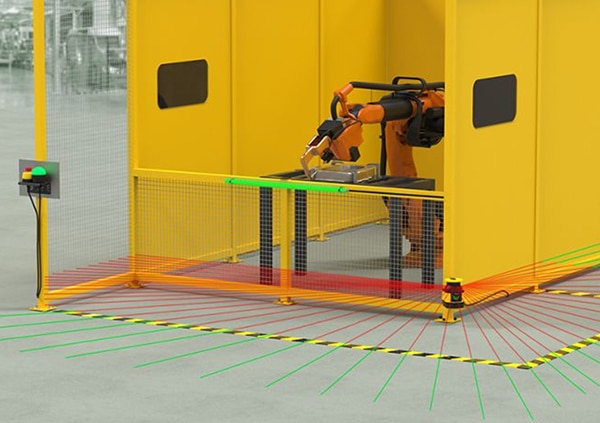 图 1:图中所示安全激光扫描仪可以监测 275° 的区域,以创建一个二维保护区,并且当有人员或物体意外进入该区域(红线区域)时发出警报。(Banner Engineering 提供图片)
图 1:图中所示安全激光扫描仪可以监测 275° 的区域,以创建一个二维保护区,并且当有人员或物体意外进入该区域(红线区域)时发出警报。(Banner Engineering 提供图片)
使用多个扫描仪有助于诸如自主移动机器人 (AMR) 和自动导引车 (AGV) 等移动系统。这些扫描仪可由电池供电且安装后可协同工作,同时监控车辆周围的数十个安全区域。可根据车速、位置和预期的方向变化激活不同的区域。车轮上的编码器和其他传感器输入可对扫描仪的数据进行补充,从而支持 AMR 导航。
安全等级如何?
确定了需要保护的实际空间后,接下来考虑所需的安全级别。除了具有不同的应用优势外,光幕和安全激光扫描仪还支持各种国际标准规定的不同安全级别。例如,ISO 13849-1 使用从“a”到“e”的性能等级 (PL) 来定义安全控制功能的可靠性,其中 PLe 代表最高等级。
安全激光扫描仪达到 PLd 标准,适用于安全要求较高的应用场合。PLd 等级适用于每 100 万至 1000 万小时(连续运行 141 年至 1141 年)才可能发生危险故障的系统。光幕有从 PLc 到 PLe 的多种安全级别选择。
IEC 62061 机械安全标准:另一项重要标准是电气、电子和可编程电子控制系统的功能安全。该标准基于对光幕和安全激光扫描仪等安全控制功能的风险评估和风险降低策略。该标准包括功能要求规范和安全完整性等级 (SIL) 要求。
诸如运行频率、响应时间、运行模式、工作周期、运行环境、故障反应功能等都属于功能性要求。由此得出的 SIL 值的范围是 1 到 4(图 2)。
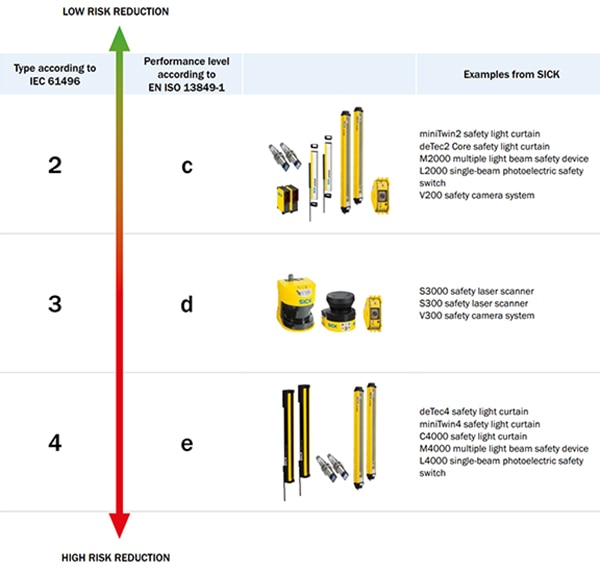 图 2:安全激光扫描仪达到 PLd 和 SIL3 标准,适用于安全性很重要的应用场合。(图片来源:SICK)
图 2:安全激光扫描仪达到 PLd 和 SIL3 标准,适用于安全性很重要的应用场合。(图片来源:SICK)
ISO 13855 规定了如何在人员接近时放置扫描仪。例如,如果扫描仪的安装高度为 300 mm,那么 70 mm 的分辨率就足以检测到人腿。安装高度较低时,建议最小分辨率为 50 mm。
扫描仪规格
一旦确定安全激光扫描仪能够满足应用要求并支持所需的安全等级,就需要考虑具体规格。重要的扫描仪规格包括:
扫描角度。有多个扫描角度可供选择,如 190°、270° 和 275°。扫描角度及其结构决定了扫描仪如何安装到系统中,以监控所需区域。
保护区。安全激光扫描仪有多个保护区,包括主保护区和一个或多个警告区。有些扫描仪可以使用扫描数据进行自动配置,忽略警告区域内的静止物体(图 3)。在某些情况下,安全激光扫描仪可以连续或同时扫描多个区域。例如,一台扫描仪可支持多达 70 个独特的安全区域组。在 AMR 上,该功能可使扫描仪根据周围环境和移动速度调整扫描区域。
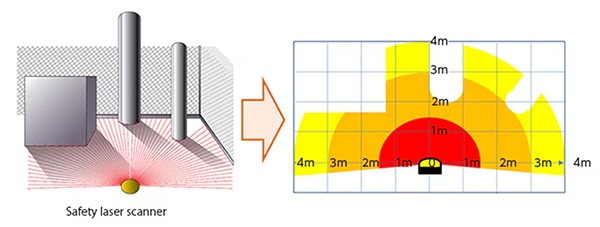 图 3:使用扫描仪可加快调试速度,该扫描仪利用扫描数据进行自动配置,以识别警告区域内的静止物体。(图片源:IDEC)
图 3:使用扫描仪可加快调试速度,该扫描仪利用扫描数据进行自动配置,以识别警告区域内的静止物体。(图片源:IDEC)
保护区范围。指保护区域与扫描仪之间的最大距离。典型值范围为 3 m 至 10 m。所需保护区域的范围取决于当地法规以及扫描仪的响应时间和分辨率。
分辨率。分辨率以毫米为单位,决定了扫描仪能准确检测到的最小物体尺寸。典型值从 30 mm 到 200 mm 不等。
响应时间。响应时间也称为检测时间,用于衡量扫描仪识别物体靠近的速度。典型值从 60 ms 到 500 ms。
采样。表示扫描仪必须连续扫描多少次才能识别物体。默认情况下,通常至少需要两次采样扫描。但是,对于某些扫描仪来说,在某些情况下,可能需要连续十次或更多次的采样扫描才能识别一个物体。
保双护区
安全激光扫描仪具有各种特性和功能,可满足不同的应用需求。例如,IDEC 的 SE2L 安全激光扫描仪具有主从功能和双保护区。主从功能可使一台扫描仪与多达三台其他扫描仪进行通信。这可以大大简化系统设计,允许使用成本较低的控制器,因为安全控制器只需与主扫描仪通信,然后由主扫描仪将指令转发至从扫描仪。SE2L-H05LP 型扫描仪可使用 2 m 至 20 m 长电缆进行安装,进一步提高灵活性。
该扫描仪的扫描周期为 30 ms,扫描区域可包括 32 种图案。使用双区功能,一台 SE2L 扫描仪可同时独立扫描两个相邻的区域,无需第二台扫描仪并简化了系统设计。
低功耗,可实现电池供电式安全
延长 AGV 和 AMR 的运行时间是一个重要考虑因素。使用 Omron 的紧凑型 (104.5 mm) OS32C-SP1-4M 安全激光扫描仪非常有助于这些应用。该扫描仪的最大功耗为 5 W(待机模式下为 3.75 W),有 70 个安全区和警告区组合可供选择,能适合复杂的环境(图 4)。其他特性包括:
- 最小分辨率可设置为 30 mm、40 mm、50 mm 或者 70 mm。
- 安全区因分辨率而异:
- 1.75 m(30 mm 分辨率)
- 2.5 m(40 mm 分辨率)
- 3.0 m(50 mm 分辨率)
- 4.0 m(70 mm 分辨率)
- 警告区半径达 15 m
- 可配置时间为 80 ms 到 680 ms。
- 区域切换时间可设置为 20 ms 至 320 ms
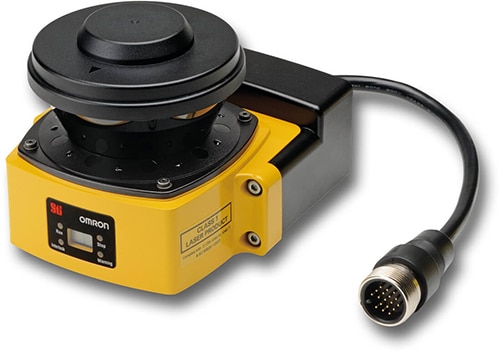 图 4:该低功耗安全激光扫描仪支持 70 组安全区域和警告区域组合,适合在复杂或动态环境中运行的 AMR。(图片来源:Omron)
图 4:该低功耗安全激光扫描仪支持 70 组安全区域和警告区域组合,适合在复杂或动态环境中运行的 AMR。(图片来源:Omron)
可选择采样和分辨率的三区域
SICK 的 S300 小型标准安全激光扫描仪具有可选的检测分辨率和采样级别。例如,S32B-2011BA 扫描仪支持 30 mm、40 mm、50 mm 和 70 mm 的分辨率直径。可为每个区域单独定义多个采样和分辨率,包括同步保护区域(图 5)。该型扫描仪支持多达 48 个可自由配置的区域和 16 个可切换区域。三区域保护功能可同时实现一个保护区域和两个警告区域。
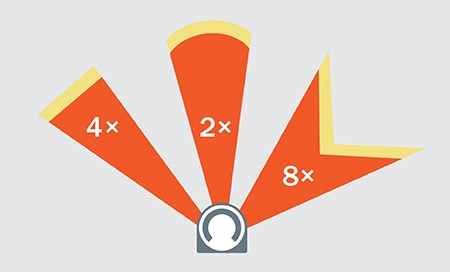 图 5:S300 小型标准安全激光扫描仪可为每个扫描区域提供多个采样级别和不同的分辨率。(图片来源:SICK)
图 5:S300 小型标准安全激光扫描仪可为每个扫描区域提供多个采样级别和不同的分辨率。(图片来源:SICK)
无需安全 PLC
Banner Engineering 的 SX5 安全激光扫描仪集成了静默功能,可以监控和响应信号,并自动暂停保护功能,允许物体通过安全区域而不生成停止指令。静默功能允许暂停整个安全区(完全静默)或仅暂停部分安全区域(部分动态静默)。
一台 SX5 主设备(如 SX5-ME70)最多可控制三个远程设备(如 SX5-R);扫描仪还可以读取增量编码器输入,从而根据车辆速度修改安全区域。这些功能可以消除对安全 PLC 等其他控制硬件的需求。
结语
如果指定、配置和集成得当,安全激光扫描仪非常适合在门禁控制、区域保护以及包括 AGV 和 AMR 在内的移动系统等应用中保护人员和机器的安全。这些安全扫描仪符合 PLd 和 SIL3 的要求,适用于对安全要求较高的应用场合。这些扫描仪具有各种特性和功能组合,可满足各种应用需求。

免责声明:各个作者和/或论坛参与者在本网站发表的观点、看法和意见不代表 DigiKey 的观点、看法和意见,也不代表 DigiKey 官方政策。






